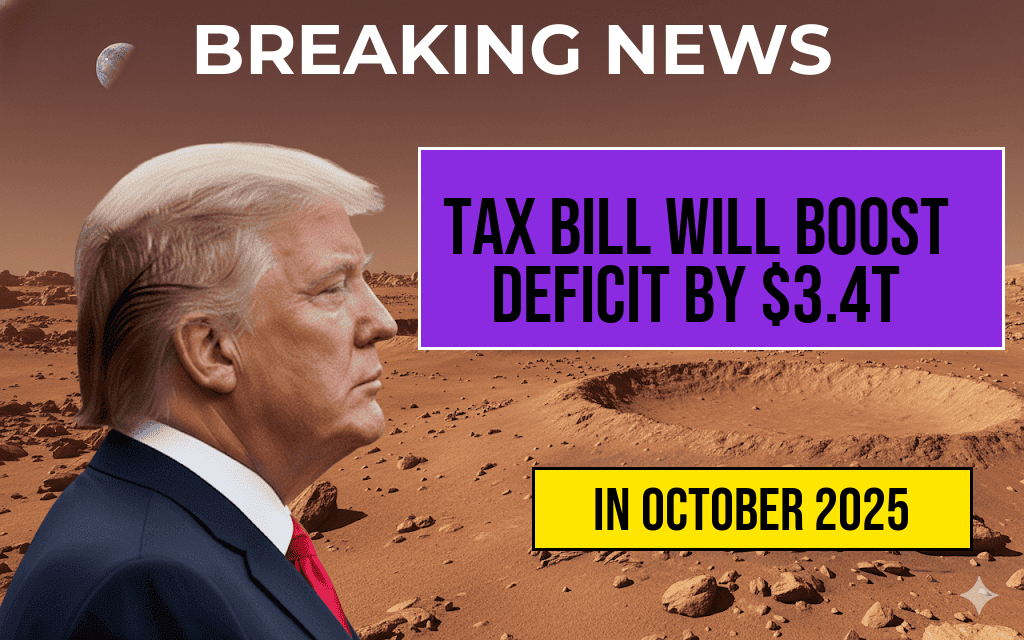A recently proposed legislative package, dubbed the “One Big Beautiful Bill,” is expected to significantly elevate the federal deficit by approximately $3.4 trillion over the next decade. Critics warn that this substantial increase could have lasting implications for the nation’s fiscal stability, potentially pushing the debt ceiling to new heights. The bill, championed by certain lawmakers as a way to streamline government programs and boost economic growth, has ignited a fierce debate across political and economic circles. While supporters emphasize its proposed benefits, financial analysts and opposition voices caution against its long-term fiscal risks, emphasizing that the projected deficit expansion could exacerbate existing debt concerns and impact future government funding capabilities.
Understanding the Scope and Projections of the “One Big Beautiful Bill”
What Does the Bill Entail?
- Reforms aimed at reducing certain federal regulations and streamlining administrative processes.
- Increased spending on infrastructure, healthcare, and education programs.
- Tax provisions intended to stimulate economic activity, including potential tax cuts for corporations and high-income earners.
- Elimination or modification of specific social safety net programs, sparking controversy among advocacy groups.
Projected Fiscal Impact
According to estimates from the Congressional Budget Office (CBO), the bill’s implementation would contribute to an increase in the federal deficit by approximately $3.4 trillion over the next ten years. This projection takes into account both the additional spending commitments and the anticipated revenue changes from proposed tax cuts.
Economic and Political Reactions
Supportive Perspectives
Proponents argue that the bill’s reforms could foster economic growth, create jobs, and modernize outdated government systems. They cite the potential for increased private investment resulting from tax incentives and deregulation measures. Some lawmakers contend that the deficit impact is justified by the long-term benefits of a more competitive economy and improved public services.
Opposition Concerns
Opponents, including fiscal conservatives and many economists, express concern that the bill’s deficit increase could undermine the nation’s fiscal health. They highlight that a rising debt load could lead to higher interest rates, crowd out private investment, and limit future policy flexibility. Critics also warn that expanding the deficit could accelerate national debt levels, which already surpass $31 trillion.
Potential Long-term Implications for Federal Finances
| Year | Projected Deficit Increase (in trillions USD) | Cumulative Debt Increase (in trillions USD) |
|---|---|---|
| 2024 | $0.34 | $0.34 |
| 2025 | $0.34 | $0.68 |
| 2026 | $0.34 | $1.02 |
| 2027 | $0.34 | $1.36 |
| 2028 | $0.34 | $1.70 |
| 2029 | $0.34 | $2.04 |
| 2030 | $0.34 | $2.38 |
| 2031 | $0.34 | $2.72 |
| 2032 | $0.34 | $3.06 |
| 2033 | $0.34 | $3.40 |
This cumulative increase underscores the long-term fiscal challenge posed by the legislation. If enacted, the bill’s deficit expansion could accelerate the trajectory of national debt, complicating efforts to stabilize or reduce the debt-to-GDP ratio in subsequent years.
Legal and Legislative Context
The bill faces significant hurdles in Congress, with opposition from both sides of the aisle questioning its fiscal sustainability. Some lawmakers have expressed concerns that the deficit projections may underestimate the actual costs or fail to account for economic uncertainties. The legislative process is expected to involve extensive debate, amendments, and potential veto threats from the executive branch.
Expert Opinions
Economists warn that large deficit increases could lead to higher borrowing costs and potential inflationary pressures. Dr. Lisa Johnson, an economist at the University of Chicago, stated, “While reforms are necessary, a $3.4 trillion increase in the deficit over a decade risks undermining fiscal discipline and could have ripple effects across financial markets.”
Public Response and Next Steps
The bill’s prospects remain uncertain as the public and advocacy groups mobilize around fiscal responsibility concerns. Stakeholders are urging lawmakers to consider alternative approaches that balance growth incentives with fiscal prudence. As negotiations continue, the true impact of the legislation will depend heavily on legislative modifications and implementation strategies.
For more detailed analysis on U.S. fiscal policy, visit Wikipedia’s federal budget overview or review recent reports from Forbes.
Frequently Asked Questions
What is the main concern raised in the article about the ‘One Big Beautiful Bill’?
The primary concern is that the ‘One Big Beautiful Bill’ will significantly increase the federal deficit by approximately 3.4 trillion dollars.
How does the bill impact the national debt and fiscal stability?
The bill is projected to substantially raise the national debt, potentially affecting fiscal stability and leading to long-term economic challenges.
What are the key provisions of the ‘One Big Beautiful Bill’ that contribute to the deficit increase?
The bill includes several tax cuts and spending measures that are expected to reduce revenue and increase government expenditures, thereby enlarging the deficit.
Who are the main stakeholders affected by the increased deficit caused by this bill?
The taxpayers, future generations, and public services are most affected, as the increased debt could lead to higher taxes and reduced government programs.
What are the potential economic consequences of passing the ‘One Big Beautiful Bill’?
Potential economic consequences include increased interest rates, reduced fiscal flexibility, and greater budget deficits that may hinder economic growth.






